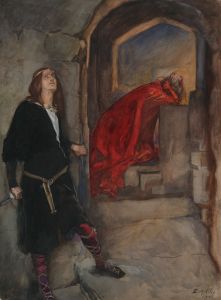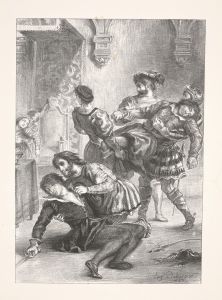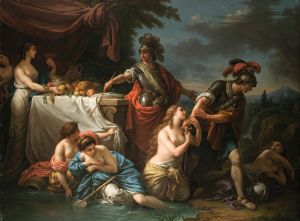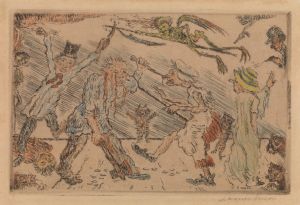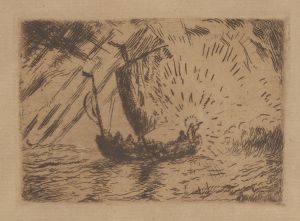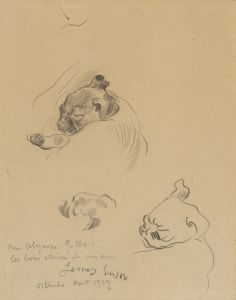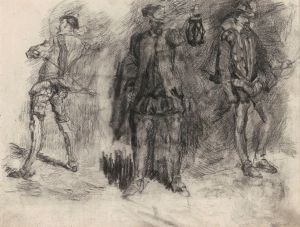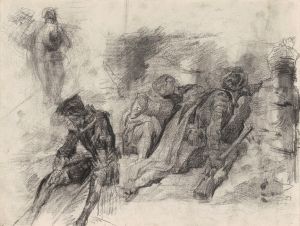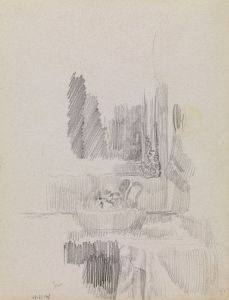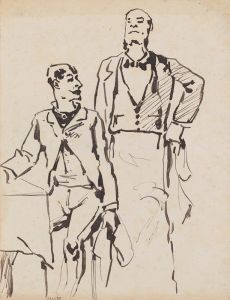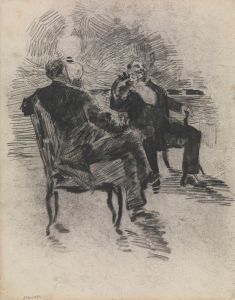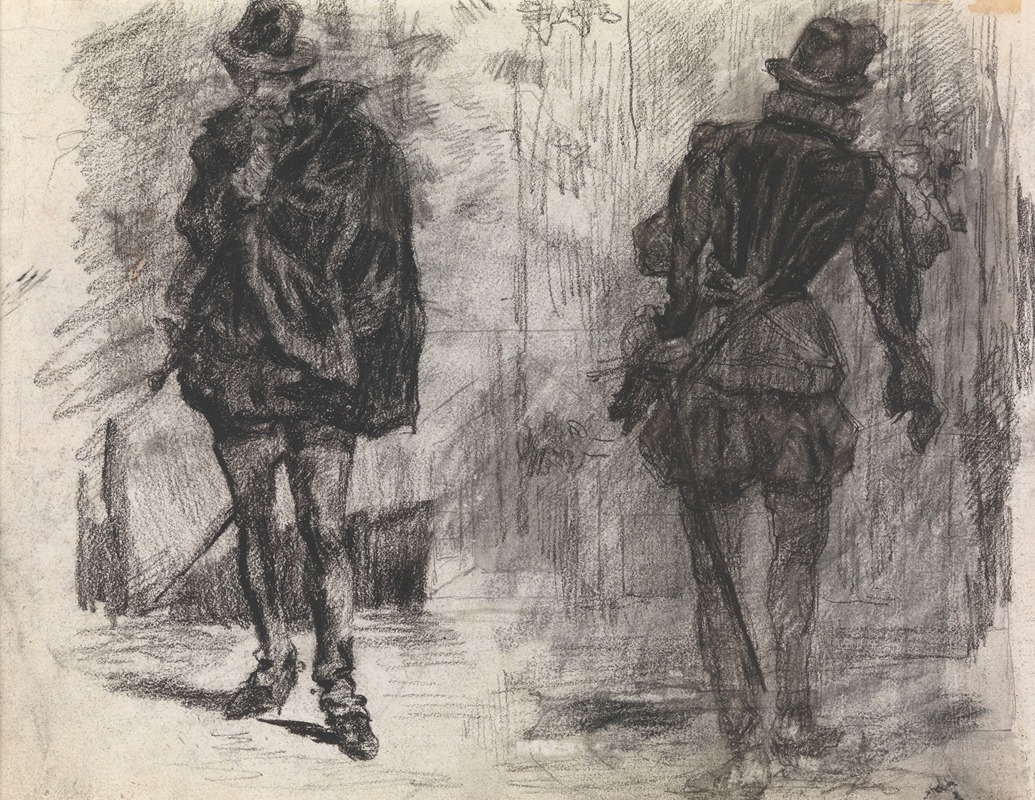
Don Quixote
A hand-painted replica of James Ensor’s masterpiece Don Quixote, meticulously crafted by professional artists to capture the true essence of the original. Each piece is created with museum-quality canvas and rare mineral pigments, carefully painted by experienced artists with delicate brushstrokes and rich, layered colors to perfectly recreate the texture of the original artwork. Unlike machine-printed reproductions, this hand-painted version brings the painting to life, infused with the artist’s emotions and skill in every stroke. Whether for personal collection or home decoration, it instantly elevates the artistic atmosphere of any space.
James Ensor, a Belgian painter and printmaker, is known for his unique and often surreal style that combines elements of symbolism and expressionism. One of his notable works is "Don Quixote," which reflects his fascination with the themes of fantasy and the grotesque. Ensor's interpretation of Don Quixote is not just a simple depiction of the literary character but a complex exploration of the human condition, societal norms, and the boundary between reality and illusion.
Ensor was born in 1860 in Ostend, Belgium, and spent most of his life there. His upbringing in a family that owned a curiosity shop filled with exotic items and carnival masks significantly influenced his artistic vision. This environment fostered his interest in the bizarre and the theatrical, which became central themes in his work. Ensor's art often features masks, skeletons, and fantastical creatures, reflecting his interest in the absurdity of human existence and the hidden facets of identity.
The character of Don Quixote, originally from the novel by Miguel de Cervantes, is an aging nobleman who becomes a self-styled knight-errant, embarking on a series of adventures in pursuit of chivalric ideals. Ensor's depiction of Don Quixote captures the essence of this character's delusional yet noble quest. The painting portrays Don Quixote in a manner that emphasizes his eccentricity and the contrast between his idealistic dreams and the harsh reality he faces.
Ensor's "Don Quixote" is characterized by vibrant colors and dynamic composition, typical of his style. The use of bold brushstrokes and vivid hues creates a sense of movement and energy, drawing the viewer into the chaotic world of the protagonist. Ensor's technique often involves a layering of paint to achieve a textured surface, adding depth and complexity to the visual experience.
The painting reflects Ensor's critical view of society and its conventions. By choosing Don Quixote as his subject, Ensor aligns himself with the character's rebellion against societal norms and the pursuit of personal truth. This theme resonates with Ensor's own life, as he often faced criticism and misunderstanding from the art establishment of his time. His work was initially met with resistance due to its unconventional style and subject matter, but he eventually gained recognition as a pioneer of modern art.
Ensor's "Don Quixote" is an example of his ability to blend humor with a profound critique of human nature. The painting invites viewers to reflect on the nature of reality and illusion, the folly of human ambition, and the enduring power of dreams. Ensor's work continues to be celebrated for its originality and its ability to challenge and inspire audiences.
In summary, James Ensor's "Don Quixote" is a significant piece that encapsulates the artist's distinctive style and thematic concerns. Through his portrayal of the iconic literary figure, Ensor explores the complexities of human identity and the perpetual struggle between dreams and reality. His work remains influential, offering a unique perspective on the interplay between art, society, and the individual.





